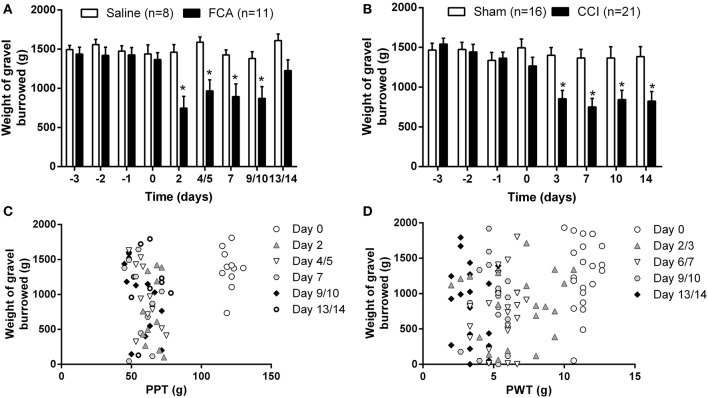Figure 5.
Cumulative mean (±SEM) weight of gravel burrowed vs. time curves for (A) Cohorts 1–3 rats administered a unilateral ip.l. injection of FCA (n = 11) or saline (n = 8), and (B) Cohorts 1–4 rats that underwent CCI (n = 21) or sham (n = 16) surgery. (C,D) Correlation between the degree of burrowing performance and mechanical hyperalgesia or mechanical allodynia for individual (C) FCA- and (D) CCI-rats tested. At days 2–10 following a unilateral i.pl. injection of FCA, there was a significant (P ≤ 0.05) temporal reduction in burrowing behavior compared with insignificant changes in the burrowing behavior of sham-rats. For CCI-rats, there was a significant (P ≤ 0.05) reduction in the mean (±SEM) weight of gravel burrowed between days 2 and 14 post-CCI surgery c.f. the corresponding values for the sham-control rats. Significant correlation between burrowing performance and mechanical hyperalgesia was observed only on day 4/5 in FCA-rats, in contrast to the lack of significant correlation between burrowing behavior and the extent of mechanical allodynia in the ipsilateral hindpaws of CCI-rats. *P ≤ 0.05 (Two-way ANOVA, post-hoc: Bonferroni) relative to that observed in the corresponding groups of sham-control rats.

